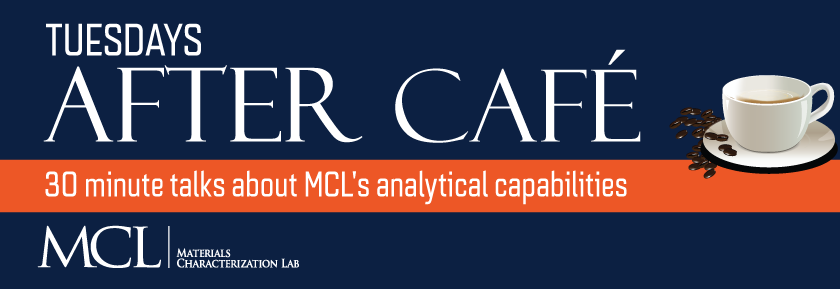
WHEN: Select Tuesdays 11:00 AM - 11:45 AM,
WHERE: 3rd Floor Commons, Millennium Science Complex
WHO: Any student, staff, or faculty interested in learning more about MCL capabilities
A casual opportunity immediately following the Millennium Café to learn about the breadth of analytical capabilities within the Materials Characterization Laboratory (MCL). These brief (30 minute) multi-technique and interdisciplinary talks will highlight applications (not theory) to provide useful insights to novice and experienced researchers working across various science and engineering challenges.
